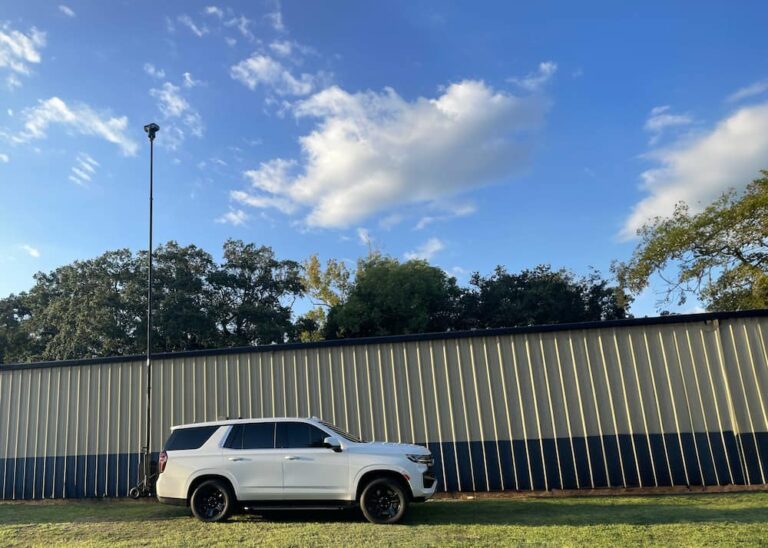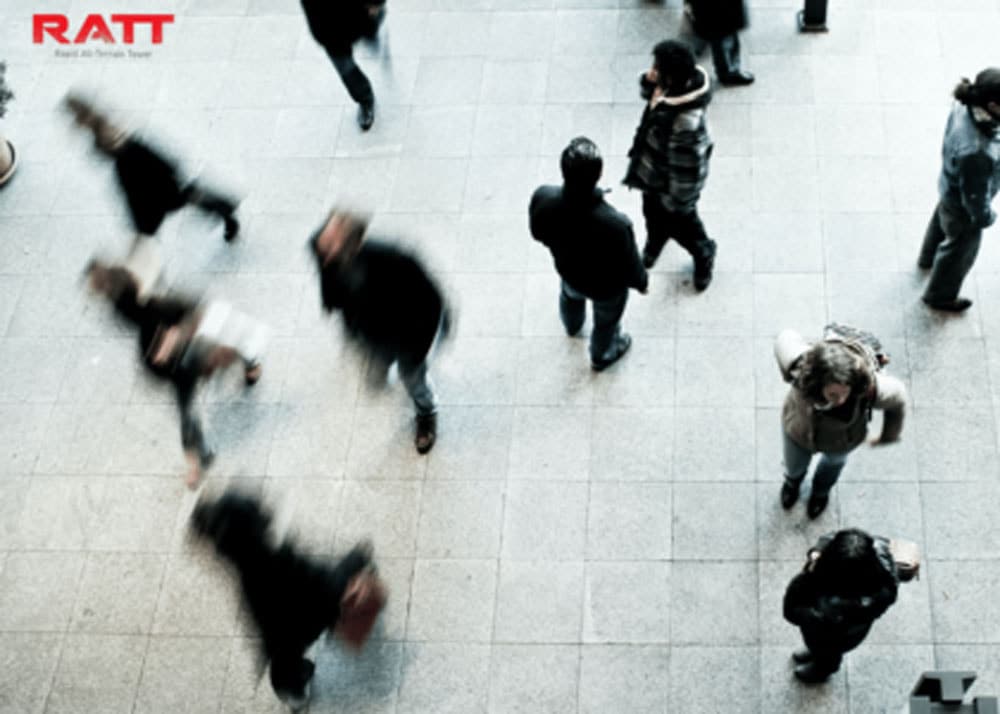Warehouses are vital to many businesses, housing valuable goods, equipment, and data. But without the right protection, warehouses can become easy targets for theft, vandalism, and cybercrime. A strong warehouse security system doesn’t just protect inventory—it safeguards your entire operation.
Combining tools like access control, cameras, and alarm systems creates a safer environment for your team, inventory, and operations.
Why Is Warehouse Security Important?
Warehouses face many threats that can disrupt operations and cause major losses:
- Theft and burglary (both internal and external)
- Vandalism and property damage
- Unauthorized access
- Cyberattacks targeting networked devices
According to the FBI’s most recent data, property crime—including burglary and theft—rose by 7.1% in 2022, even as violent crime slightly declined. Meanwhile, the Identity Theft Resource Center reported a record 3,205 data compromises in 2023, marking a 72% increase over the previous high. These statistics show that both physical and digital threats are rising—making it more important than ever to implement layered warehouse security systems to protect inventory, data, and operations.
1. Physical Security Measures
Physical security is your warehouse’s first and most visible layer of defense. It plays a critical role in keeping unauthorized individuals out and limiting access to sensitive areas, especially during off-hours or in isolated locations.
Key components include:
- Fencing and gates: Clearly define property lines and control entry and exit points.
- Security signage: Warns potential intruders of surveillance, alarms, and restricted access areas, acting as a psychological deterrent.
- Bollards and barriers: Prevent vehicle-based threats like ramming or unauthorized parking near key infrastructure such as loading docks.
To further strengthen your perimeter, install motion-activated floodlights and perimeter lighting. These lighting measures discourage trespassing at night, improve visibility for cameras and personnel, and reduce the risk of break-ins in poorly lit areas.
2. Surveillance Systems
Cameras help monitor day-to-day activity and record evidence in case of an incident. A reliable warehouse security system should include high-quality cameras with proper lighting support.
Common camera types:
- CCTV cameras: Affordable and ideal for fixed surveillance.
- IP cameras: Offer remote viewing and clearer footage over networks.
- Motion-activated cameras: Conserve power and storage by recording only when needed.
For optimal results, it’s essential to follow best practices for lighting and camera placement across your warehouse. Proper camera positioning—covering entry points, loading docks, and high-value inventory areas—helps eliminate blind spots and ensures better coverage during incidents. Learn more about when and where to deploy surveillance cameras to strengthen your overall surveillance strategy.
Camera mounts also play a key role in flexibility and visibility. Mobile surveillance towers offer elevated views and rapid deployment for exterior coverage, while wall-mounted surveillance systems provide a fixed solution ideal for interior spaces. Pairing either option with reliable light towers enhances visibility in low-light or nighttime conditions.
Clear footage is critical for identifying threats and responding quickly. To get the most from your system, explore the top benefits of a video surveillance system and how lighting supports around-the-clock monitoring.
3. Access Control Systems
Access control limits who can enter sensitive areas, helping reduce the risk of theft, sabotage, or unauthorized access. These systems provide an added layer of security by verifying identity before granting entry.
Access Control Options include:
- Keycard systems: Easy to manage and assign, ideal for general employee access.
- Keypad entry: Requires PIN codes, offering a straightforward but secure solution.
- Biometric scanners: Use fingerprints or facial recognition for high-security zones where strict access is critical.
Use multi-factor authentication where possible and set access levels based on employee roles to ensure that only authorized personnel can reach restricted areas. Integrating access logs can also help track movement and investigate incidents more efficiently.
4. Warehouse Security Alarm and Intrusion Detection Systems
Alarms provide real-time alerts during break-ins, unauthorized access, or other suspicious activity. A reliable warehouse security alarm system helps minimize response time and reduces potential losses.
A complete alarm system typically includes:
- Motion detectors
- Glass break sensors
- Door contact alarms
Modern alarm systems can be linked to remote monitoring centers, which immediately notify law enforcement or security personnel when triggered. For the most effective coverage, choose a solution that integrates with your surveillance cameras and access control systems, giving your team full visibility and faster decision-making during critical events.
5. Security Personnel and Protocols
Trained security guards add a critical human element to your warehouse security system, offering real-time judgment and adaptability that technology alone can’t provide. Their presence alone can deter potential intruders or internal misconduct.
Benefits of on-site security guards include:
- Monitoring surveillance feeds for unusual behavior
- Conducting regular patrols inside and around the facility
- Responding immediately to threats, alarms, or emergencies
To maximize effectiveness, combine guards with clearly defined security protocols that create consistency and accountability throughout the team.
Key security protocols to implement:
- Visitor sign-in and badge issuance to control access
- Daily employee ID checks to prevent impersonation
- Routine security audits and emergency drills to maintain readiness
Establishing a detailed response plan ensures your team can act quickly and correctly during break-ins, fires, or cybersecurity incidents. Training employees regularly on these procedures strengthens your overall security posture and reduces the risk of panic or missteps in high-pressure situations.
6. Inventory Management and Loss Prevention
Not all warehouse threats come from the outside—internal theft and inventory mismanagement are persistent challenges in the logistics industry. Without proper controls, even small losses can add up quickly and impact your bottom line.
Technologies that help reduce loss include:
- RFID tagging for real-time inventory visibility
- Barcode scanning to streamline and verify tracking
- Inventory tracking software to monitor stock levels, movement, and discrepancies
Strengthen your system with additional safeguards that promote accountability.
Add layers of protection with:
- Surprise inventory audits to detect inconsistencies
- Anonymous tip lines that allow employees to report suspicious behavior without fear
- Role-based system access to restrict who can alter inventory records or move high-value goods
These tools not only reduce human error but also help create a culture of transparency and trust—discouraging dishonest behavior before it starts.
7. Implementing an Integrated Warehouse Security Strategy
No single solution can protect your warehouse on its own. To be effective, your warehouse security system must work as a cohesive unit—blending physical defenses, surveillance, access control, and employee protocols into one seamless strategy.
Steps to build an integrated security plan:
- Assess vulnerabilities based on your warehouse’s layout, size, location, and daily operations
- Choose systems that complement each other—such as pairing cameras with alarms and access control for overlapping coverage
- Train staff thoroughly on how to follow security protocols and operate each system properly
- Update your strategy regularly to account for new risks, changing operations, or evolving threats
As threats become more sophisticated, many facilities are turning to advanced technologies to strengthen their defenses. For example, AI-powered analytics are transforming security operations by detecting patterns, flagging unusual behavior, and enabling real-time decision-making—making them a valuable addition to modern warehouse security strategies.
Final Thoughts
A modern warehouse security system protects more than just products—it safeguards your people, data, and long-term business continuity. Whether you manage a single facility or a network of distribution centers, investing in the right security systems for warehouses reduces risk and helps operations run smoothly.
By combining physical defenses, smart surveillance, and employee accountability, your warehouse can stay one step ahead of crime. For help designing or upgrading your warehouse security strategy, contact us to learn more about customized solutions that fit your facility’s needs.







